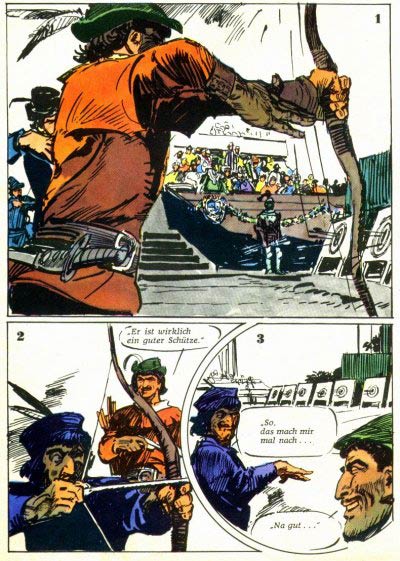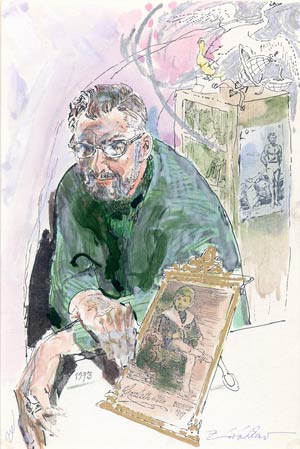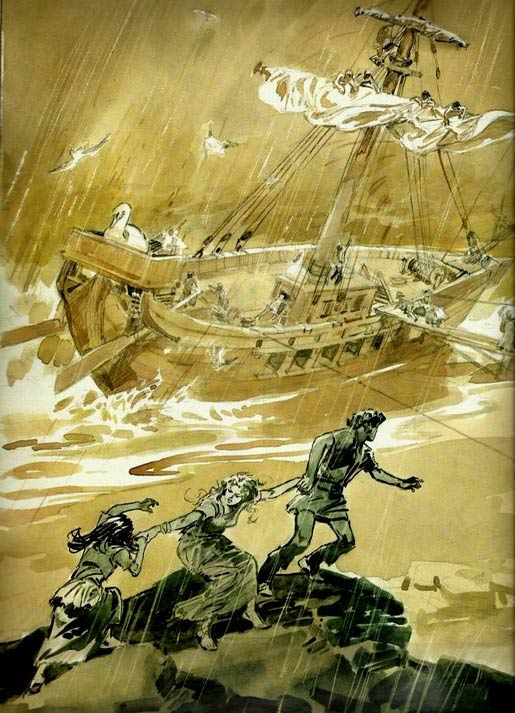Ernö Zórád was a Hungarian comic artist and book illustrator. He is recognized as one of the most important and internationally acclaimed comic creators of his country. His background in book illustration helped him adapting several literary classics in serialized comic books. The polymath artist was also a gifted singer and piano player.
Early life and career
Ernö Zórád was born in 1911 in Balassagyarmat. He studied for two years at the Royal Institute of Arts and Crafts, but quit afterwards. He was employed by Baron Egon Wallburg as a painter of hunting scenes. It was only after 1945 when he began illustrating periodicals. He started working for Magyar Ifjúsági Lapkiadó, which sparked off a graphic career at the puzzle/comic magazine Füles which would last for four decades. Between 1952 and 1988 Zórád painted images for slide films, based on popular novels such as Rudolf Erich Raspe's 'The Adventures of Baron Münchhausen', Jonathan Swift's 'Gulliver's Travels' and Miguel de Cervantes' 'Don Quixote'. For a long while Zórád had no high opinion about comics. Until 1964 the few comics he made look more like rough sketches, compared with his later works.
'John Bird'.
Early comics
Zórád's earliest significant comic book was 'Winnetou', a western comic based on Karl May's novel of the same name. It was serialized in the magazine Pajtás and marked the first time he used speech balloons. In 1964, Füles published 'Fekete Gyémántok' ('Black Diamonds', a comic book adaptation of Jókai Mór's novel), which bears all the characteristics of Zórád's style. With his detailed and technically accurate drawings, divided in dynamic page compositions Zórád set a high standard for all Hungarian comic artists which followed. By inserting contemporary photographs and illustrations into panels he pioneered photo comics in his country. He originally followed scripts written by Tibor Cs. Horváth, József Hunyady and Péter Kuczka. From 1975 on he did the scriptwork himself.
Zórád's comics were published in many Eastern European countries. His main works are Sándor Petöfi's 'János Vitéz' ('Johnny Corncob', 1964), József Hunyady's 'A Fekete Lovag' (1968), Kenneth Roberts' 'Az északnyugati átjáró' ('Northwest Passage', 1972), Kálmán Mikszáth's 'Új Zrínyiász' (1977), Jenö Heltai's 'A 111-es' (1980) and Edmond Rostand's 'Cyrano de Bergerac' (1982).
Recognition
As early as 1947 Zórád organized his first exhibition in Budapest. At the International Caricature Exhibition in Vienna (1955) he received an award. In 2000 he was honored with the Order of Merit of the Hungarian Republic (Officer Grade).
Final years and death
In 1980 Zórád started making a series of water color paintings which depict the intimate atmosphere of Tabán, a district not far from the city Buda (nowadays Budapest), which had been demolished in the 1920s. Late in his career, at the age of 86, he still showed his skill with 'Die Verschwundene Miniatur' (1997), an adaptation of Erich Kästner's novel of the same name. Leaving behind more than 300 comics, he passed away at the age of 93, on 8 April 2004, in Budapest.
'Last Days of Pompeii'.







